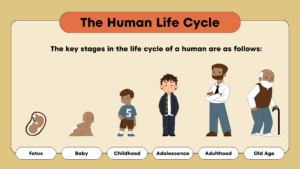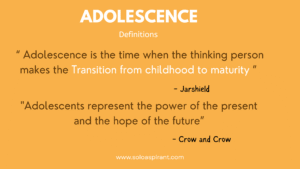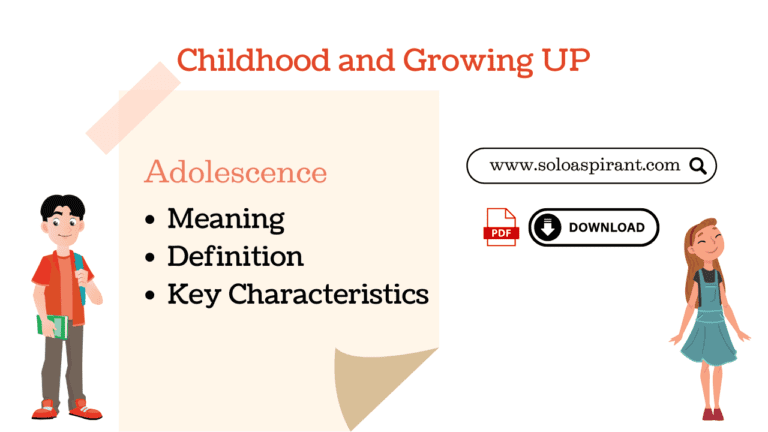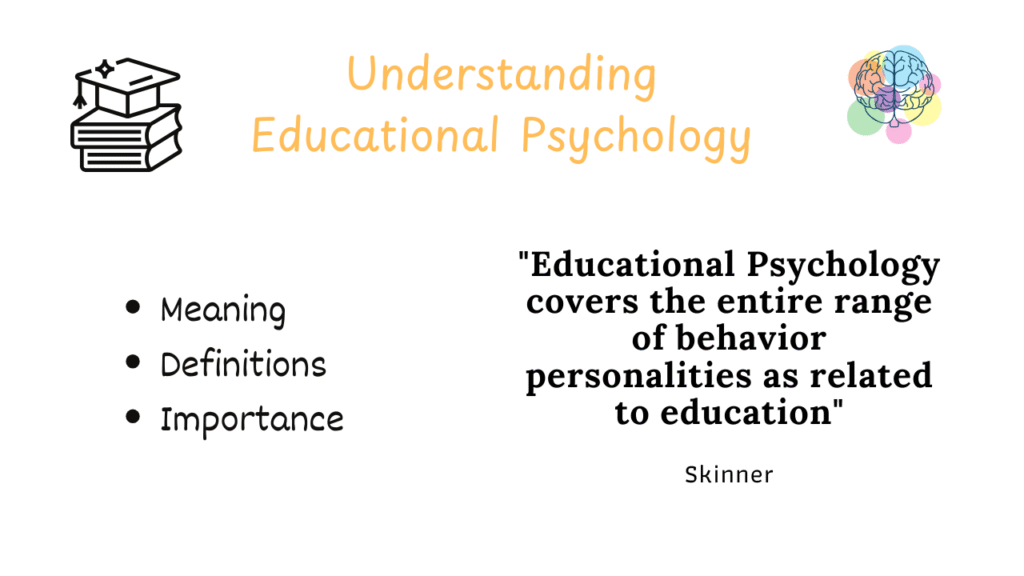Adolescence – Meaning, Etymology, and Characteristics
Adolescence is a transitional phase between childhood and adulthood, beginning after childhood and typically ending in early adulthood.

Etymology of Adolescence
The word Adolescence is derived from the Latin ” adolescere “, which means “to grow to maturity.”
Father of Adolescence Psychology – G. Stanley Hall
Adolescence is also known as
- Storm and Stress – This term, introduced by psychologist Stanley Hall, refers to the emotional ups and downs or challenges that often come with being a teenager.
- Transitional Period – between childhood and adulthood.
- Golden Period – Stage of self-discovery, exploration, and identity formation.
- Bridge Period – linking the innocent years of childhood to the more complex world of adult responsibilities.
Definitions of Adolescence:

Adolescent Age:
According to NCERT, adolescence typically ranges from 10 to 19 years of age.
Note: Different books have been written about different ages of adolescence, so in the exam, it is better to mention the source of the adolescent age; the source must be reliable, such as NCERT or WHO (World Health Organisation).
Characteristics of Adolescence
- Physical Aspect
- The Mental or Intellectual Aspect
- Emotional Aspect
1. Physical Aspect:
At this stage, the physical development of boys and girls takes a rapid pace (spurt growth) –
- Height and Weight: Height increases at a very rapid rate during adolescence. An increase in weight is observed more in boys than in girls.
- Development of Reproductive Parts:
During puberty, they start to develop reproductive organs due to the Secretion of hormones from glands, the release of Testosterone in Males and Estrogen in females. - Voice Changes: The voice of boys can be seen as rougher compared to the voices of girls; meanwhile, the voice of girls is often sweeter.
- Changes in Body: During puberty, rapid changes can be seen in both boys and girls.
Changes in Boys: Increase in height, muscle mass, appearance of facial hair, deeper voice, pubic hair.
Changes in Girls: Starts of the menstrual cycle, breast development, widening of hips, and an increase in body fat.
2. Mental and Intellectual Development:
Adolescence is an important stage in human development that connects childhood to adulthood. It’s during this time that we see major mental and intellectual transformations that play a big role in shaping a person’s future.
Here are some important points about mental and intellectual development during this transformative phase:
- They start developing reasoning power and abstract thinking.
- They become conscious of future life.
- They start developing Competitive Skills.
- Development of Imagination Power and Creativity.
- Starts Developing Leadership Skills.
- Development of Critical Thinking.
- Formation of Self-Identity.
- They start developing problem-solving and decision-making ability.
3. Emotional Development:
Emotional changes are one of the significant aspects of the adolescent stage; these are some key points of emotional development.
-
Lack of Emotional Control: During their teenage years, they often start to develop negative emotions such as fear, rage, jealousy, rebelliousness, irritation, and mood swings.
- Age of Hero Worshiping: Adolescents often look up to their role models; they try to imitate or mimic their behaviors, actions, and tastes, such as wearing clothes like their idols and acquiring their personalities.
- Age of Daydreaming: They start to live in their fantasy world to escape reality.
- Prioritization of Peer Groups: Teens start caring more about what their friends think and sometimes even more than the guidance from their family.
- Development of Libido (Attraction of the opposite sex): Due to changes in hormones, their interest in the opposite sex also begins to grow.
- High-Risk Behavior: During adolescence, teens often find themselves drawn to risky behaviors such as trying new things, seeking thrills, and making impulsive choices.
Therefore, adolescence is a stage of mental, intellectual, and emotional growth that shapes the individual they become in the future.
The developmental stages of adolescence help parents and teachers to guide teenagers toward positive growth, becoming responsible citizens, confident, and successful adults, by fostering or nurturing their creativity and intellect.


